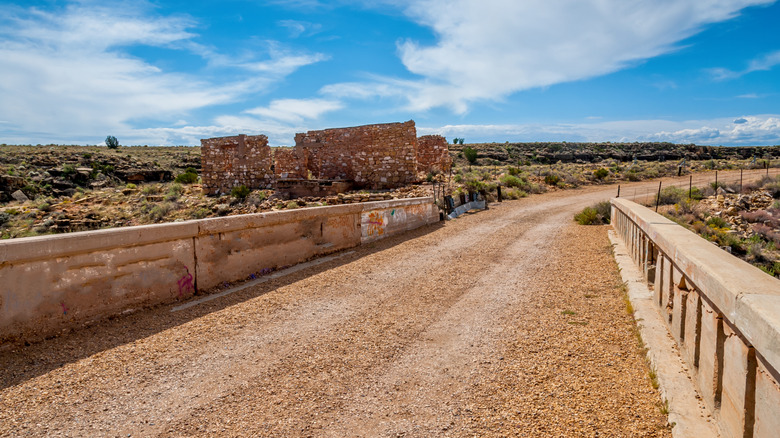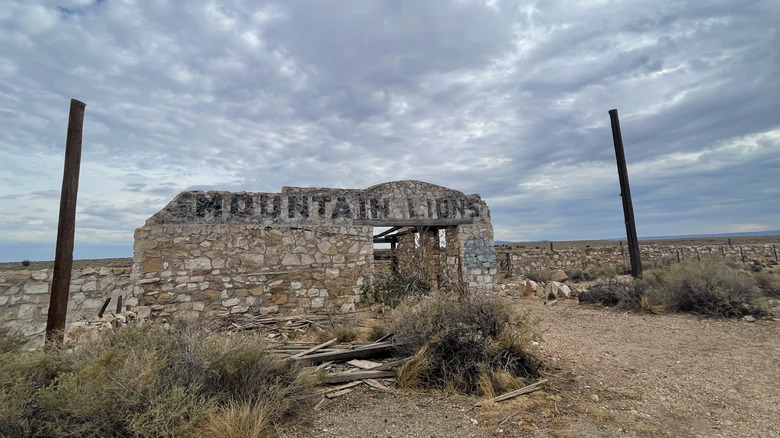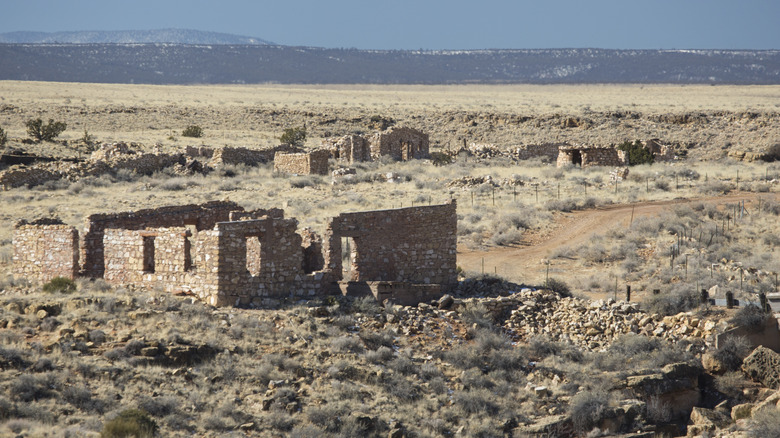Arizona's Creepiest Destination On Route 66 Is A Chilling Landmark Sandwiched Between Flagstaff And Winslow
From the eye-catching roadside attractions of Groom to the neon glow of one of America's coolest retro motels in Tucumcari, Route 66 boasts some of the best road trip stops of any cross-country journey. However, tucked between the kitschy landmarks and old school diners brimming with 1950s nostalgia, there are plenty of underrated stops on Route 66 that encapsulate the darker side of history. Haunted hotels, ghost towns eerily frozen in time, and a cursed stretch of highway formerly known as Route 666 are among the Mother Road's creepiest destinations.
One of the most chilling landmarks on the Arizona portion of the route is the ominously-named Apache Death Cave. Situated between Winslow and Flagstaff, the roadside cave is shrouded in a blood-drenched history, rendering it one of Route 66's most cursed attractions. If you're planning a trip down the iconic highway and want to delve deeper into its haunted destinations, make a pit stop at the Apache Death Cave — if you dare.
Exploring the Apache Death Cave
Arizona is home to some of Route 66's most popular attractions. It's a state where you can stand on the corner of Winslow — posing with the legendary Eagles statue while humming their classic song "Take it Easy" — and set up camp at a roadside motel in Flagstaff before journeying to the awe-inspiring Grand Canyon all in a day's travel.
Nestled between these iconic Arizona destinations, you'll find the Apache Death Cave. Located just off I-40, about 23 miles northwest of Winslow, the cursed cavern looms within a ghost town called Two Guns. Pulling off at the Two Guns exit, you'll be greeted by a heavily-graffitied gas station whose pumps have been dry for decades. Behind the gas station sits the remnants of an old campground with an empty swimming pool filled with more graffiti art. Just beyond that, you'll find the abandoned segment of Route 66 that leads to the fabled cave. After passing the stone remains of an old zoo and crossing the spooky Canyon Diablo Bridge, you'll see the ruins surrounding the Apache Death Cave.
You'll be able to see the hollowed-out cavern from the ground level. However, if you're brave enough to explore the belly of the beastly cave, you can (carefully) scale down the rocks and decrepit wooden planks leading to the entrance. Grab a flashlight, and beware of snakes and other wild creatures that may be lurking within. Inside, you'll find a narrow tunnel lined with loose rocks, dark nooks, and creepy crannies. Some spaces are only accessible by crawling, but most of the tunnel can be explored on foot. Proceed with extreme caution, and be aware of scorching temperatures during the summer months.
The dark lore of the Apache Death Cave
Like most creepy, abandoned destinations, the Apache Death Cave has a horribly dark history. Back in 1878, the cave was the site of a massacre. As the story goes, an army of Apache raiders attacked a Navajo encampment near the Little Colorado River, kidnapping three Navajo girls and fleeing into the desert. However, the Navajo eventually discovered the raiders hiding out in this cavern, where the Navajo exacted their revenge by setting the encampment on fire. Over 40 people are said to have perished in the cave.
In the wake of the fire, no Apache returned to the cave, citing it and the surrounding ruins as cursed land. Chalking it up to superstition, pioneers ignored the stories and built cabins around the cave. Their stays were rarely peaceful, allegedly haunted by the ghostly moans and phantom footsteps from restless spirits. So, if you can stomach the haunted lore, you're welcome to make the trek inside the Apache Death Cave. Just know that you may not be alone.


